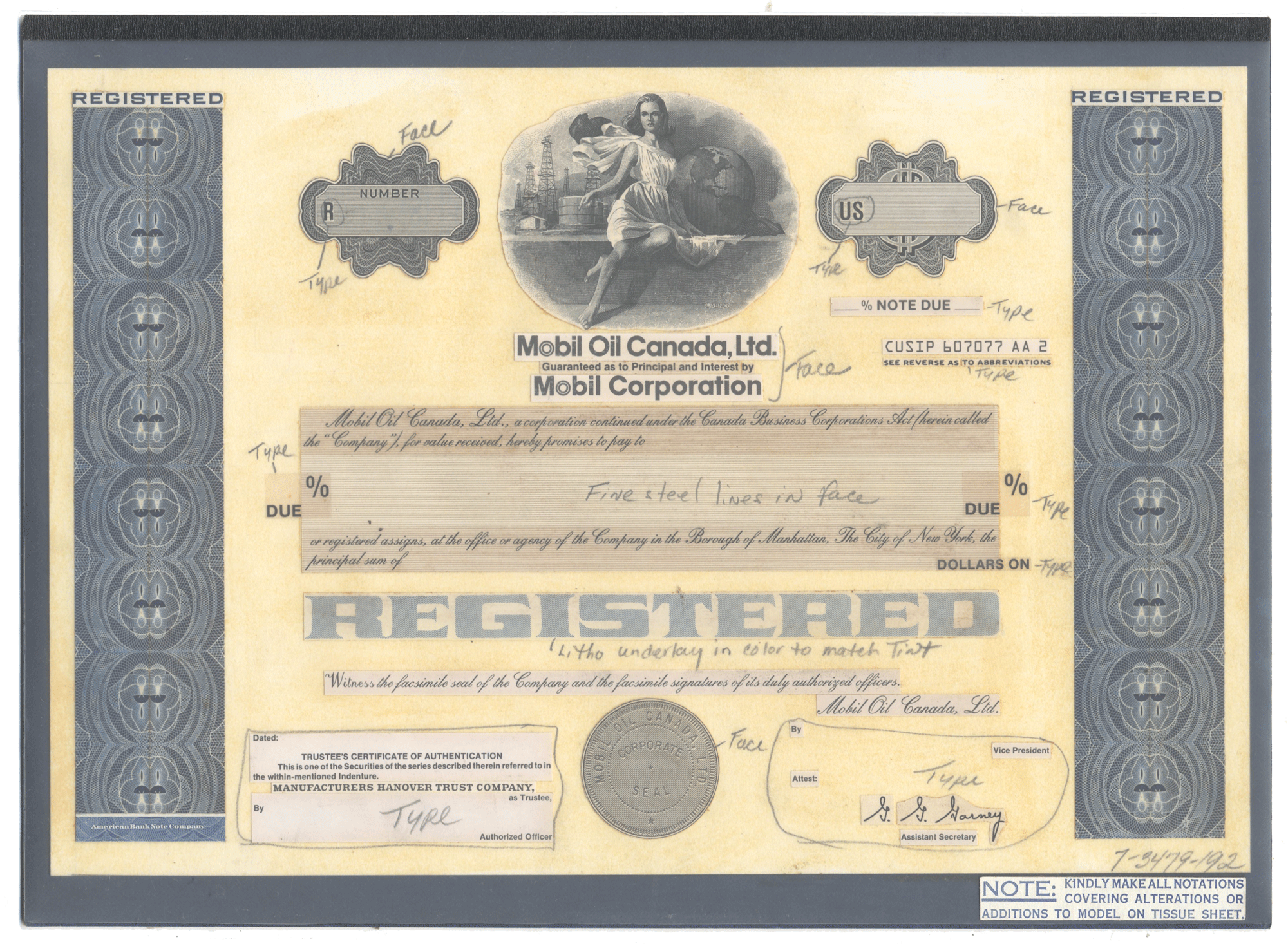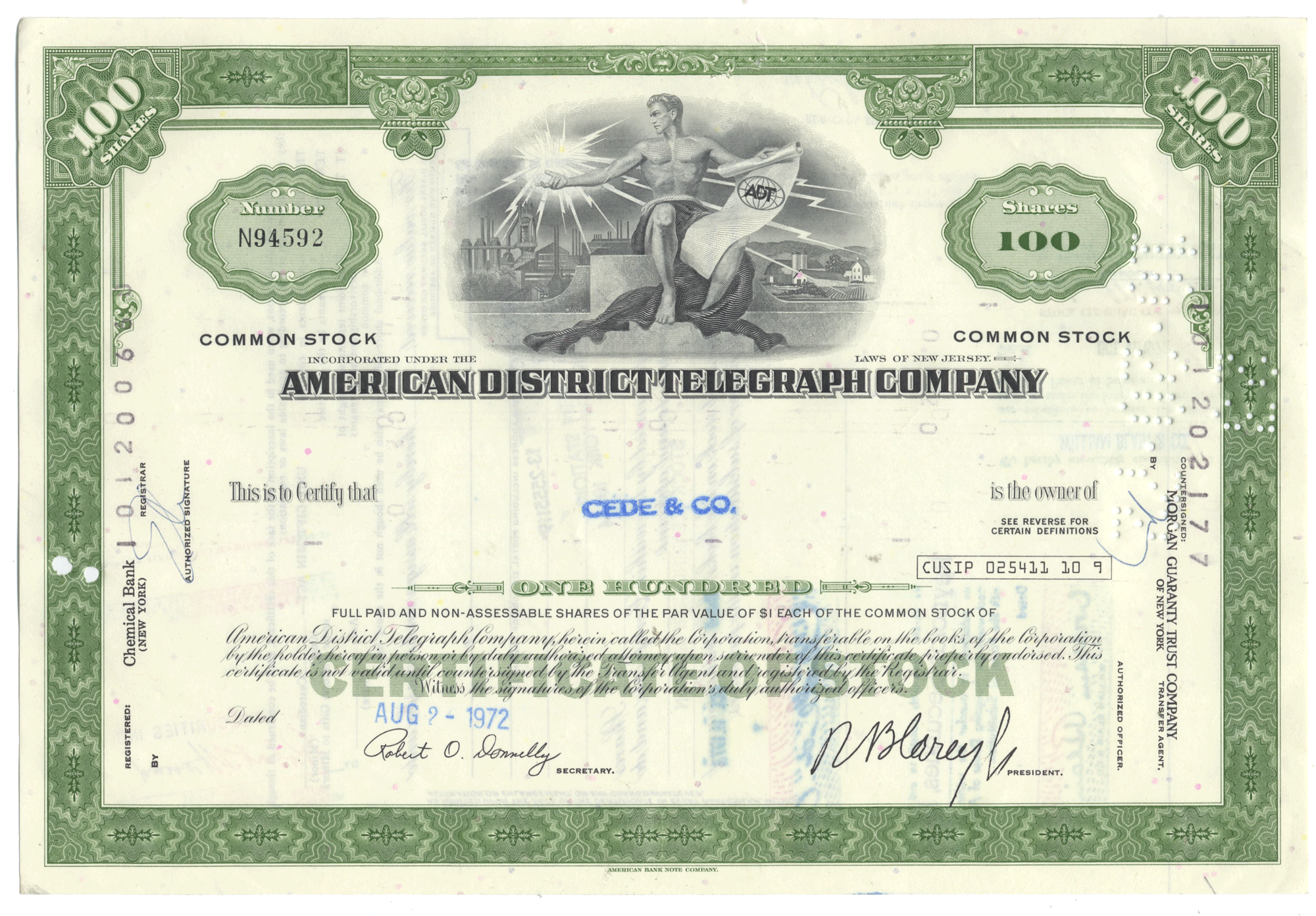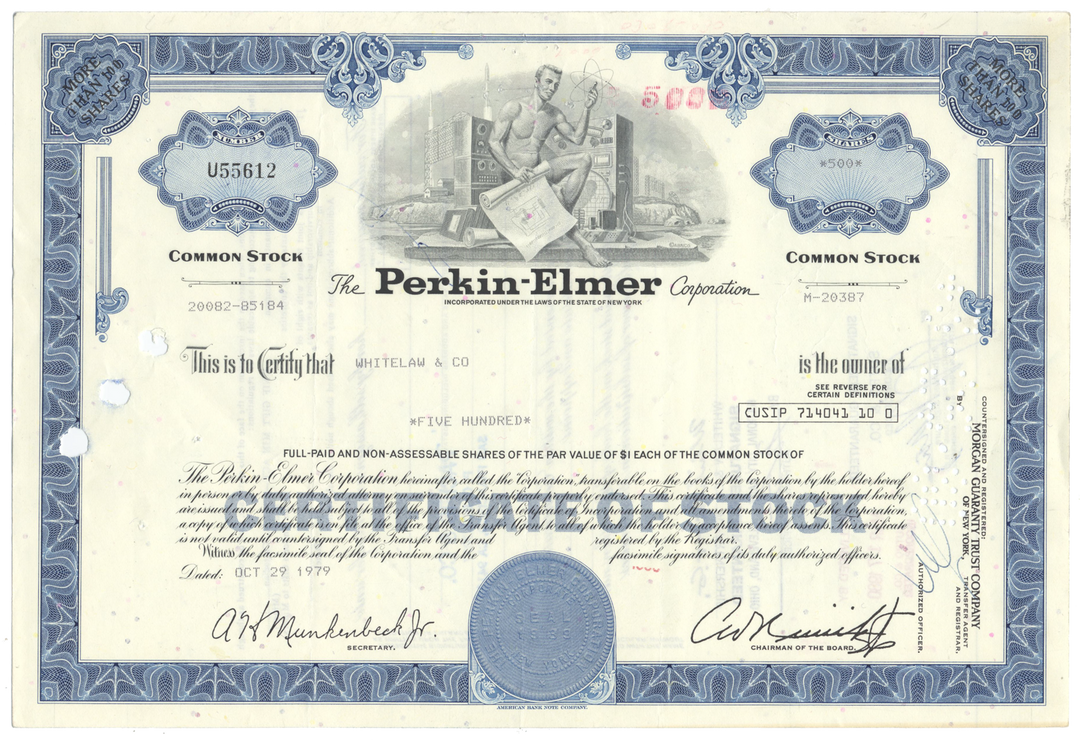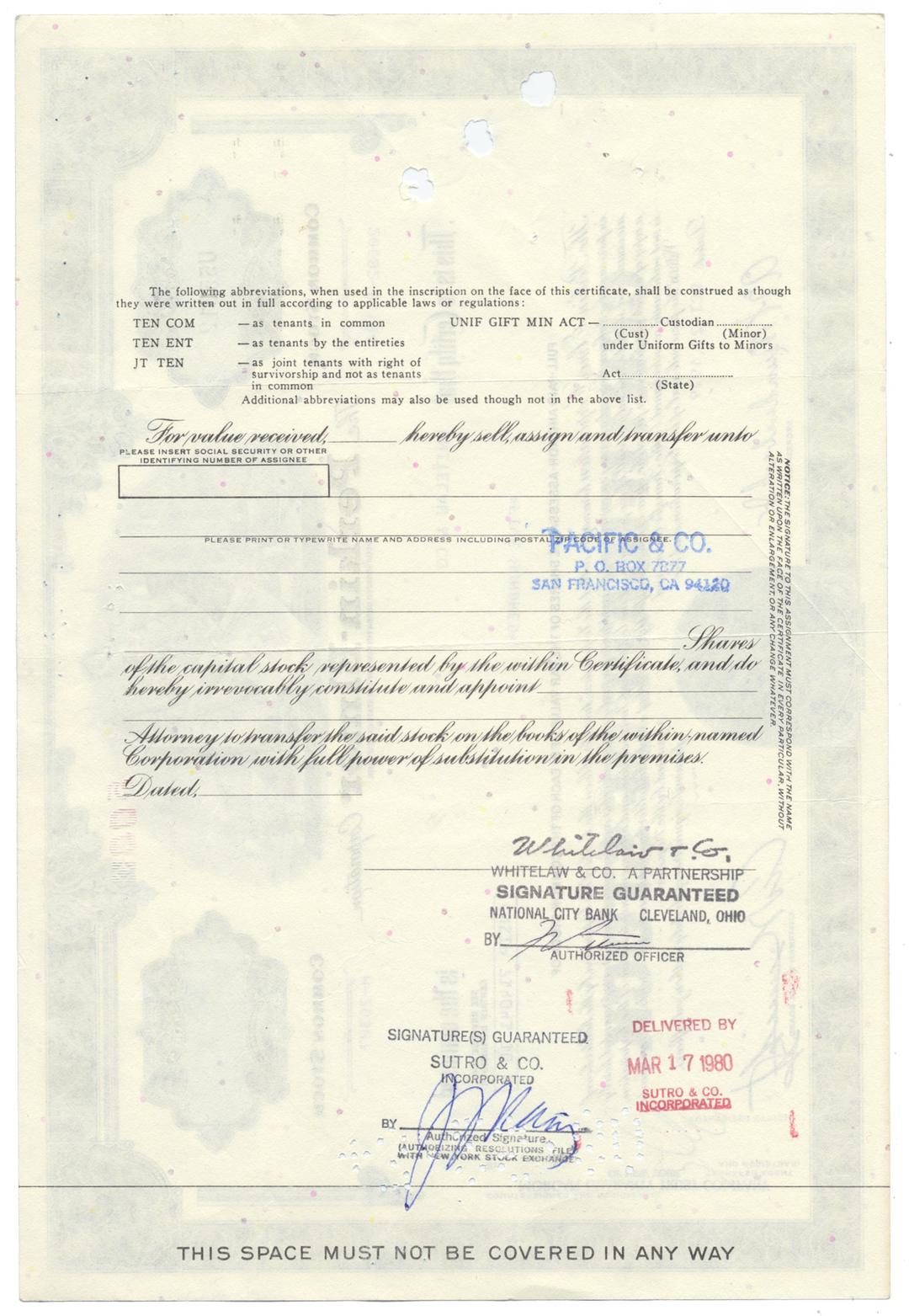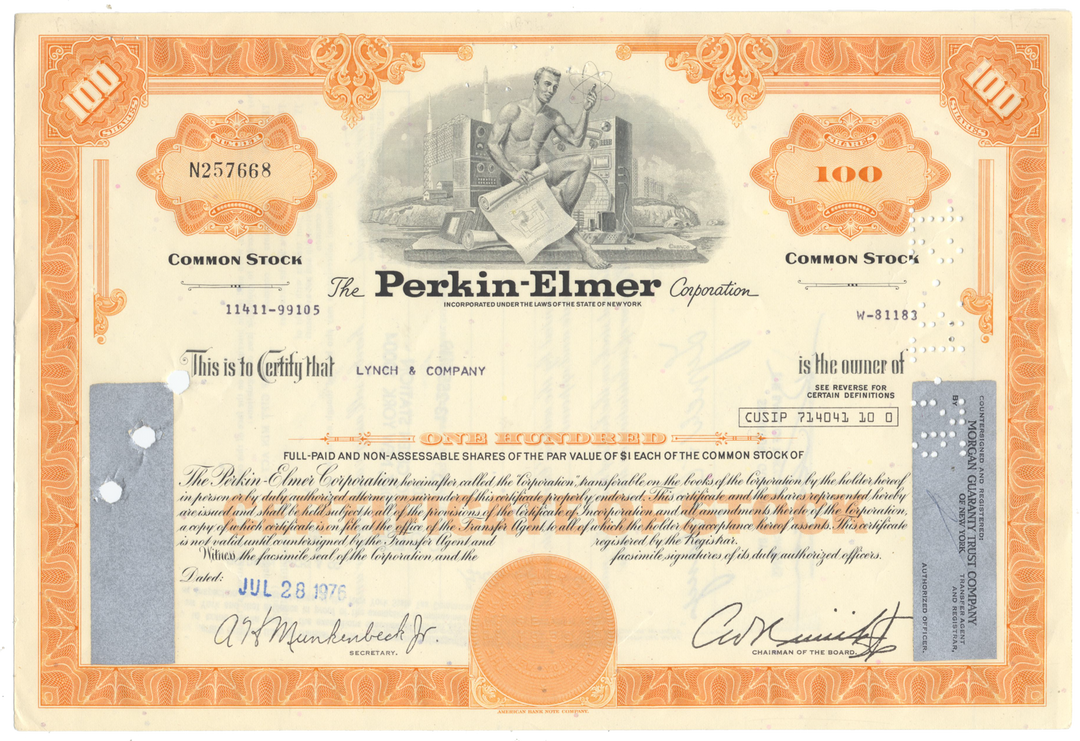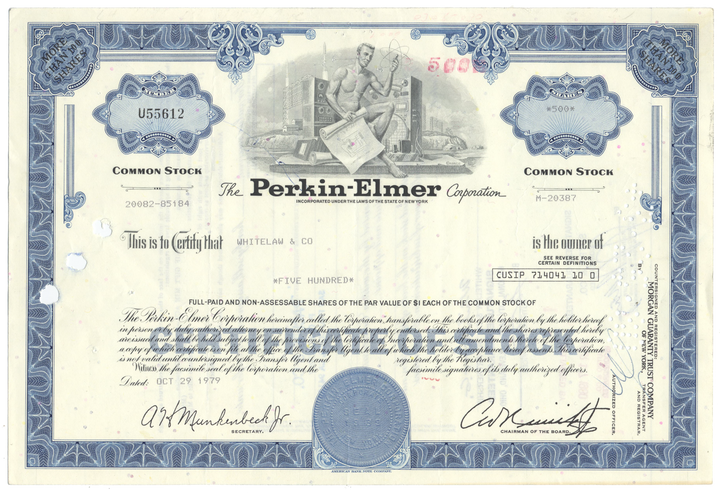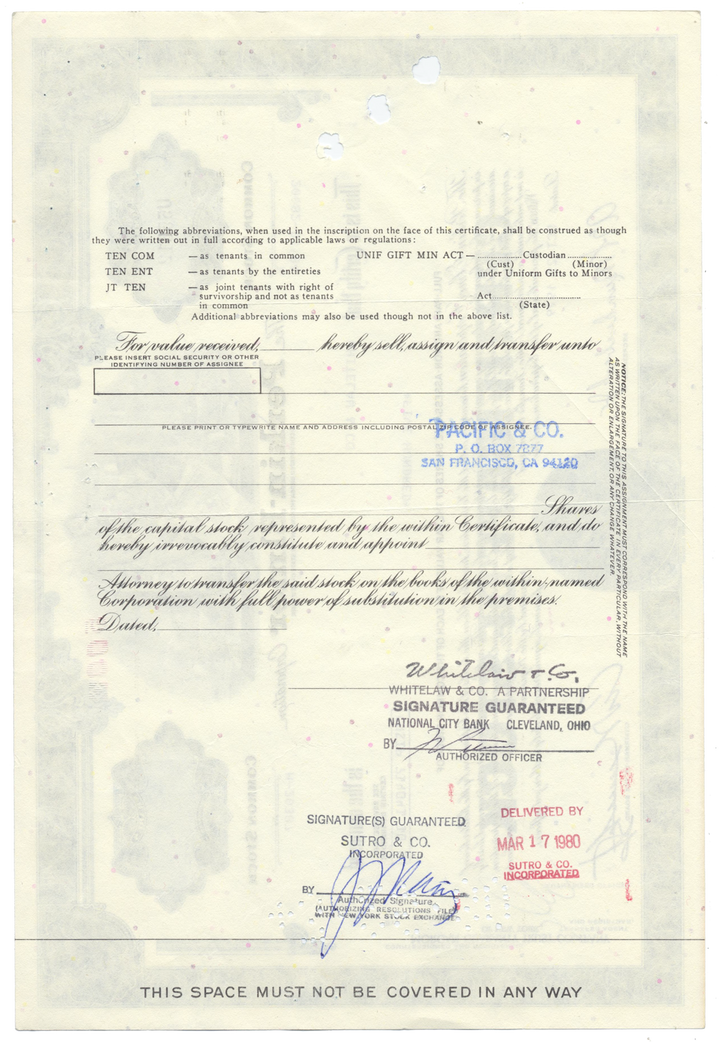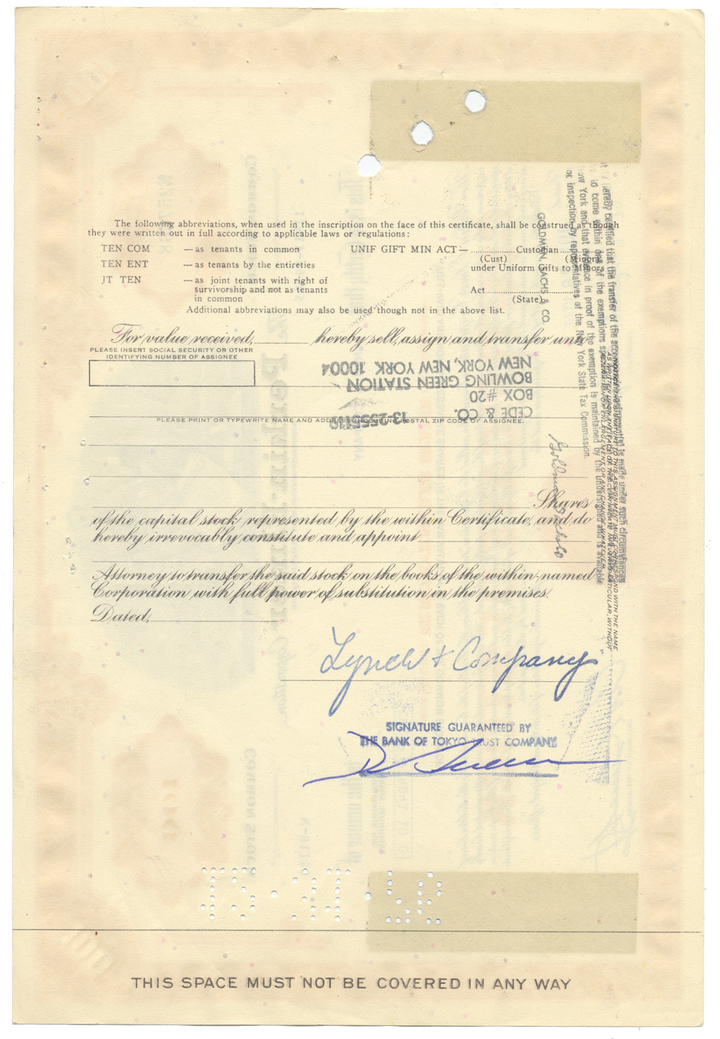Perkin-Elmer Corporation
- Guaranteed authentic document
- Orders over $50 ship FREE to U. S. addresses
You will receive the exact certificate pictured
Over 35 years old
Common stock
July 28, 1976 (orange)
Issued, canceled
American Bank Note Company
Machine printed signatures
12" (w) by 8" (h)
NA
Historical Context
Richard Perkin was attending the Pratt Institute in Brooklyn to study chemical engineering, but left after a year to try his hand on Wall Street. Still interested in the sciences, he gave public lectures on various topics. Charles Elmer ran a firm that supplied court reporters and was nearing retirement when he attended one of Perkin's lectures on astronomy being held at the Brooklyn Institute of Arts and Sciences.
The two struck up a friendship over their shared interest in astronomy, and eventually came up with the idea of starting a firm to produce precision optics. Perkin raised $15,000 from his relatives, while Elmer added $5,000, and the firm was initially set up as a partnership on April 19, 1937. Initially, they worked from a small office in Manhattan, but soon opened a production facility in Jersey City. They incorporated the growing firm on December 13, 1939. A further move to Glenbrook in Connecticut in 1941 was quickly followed by another move to Norwalk, Connecticut, where the company remained until 2000. The opening of World War II led to significant expansion as the company produces optics for range finders, bombsights, and reconnaissance systems. This work led to the U.S. Navy awarding them the first "E" for Excellence award in 1942.
Perkin-Elmer retained a strong presence in the military field through the 1960s and at the same time was significantly involved with OAO-3 a 36 inch Ultra Violet Space Telescope, Skylab and their major contribution to the Apollo program was the CO2 sensor that saved the astronauts during the Apollo 13 failure. They were a primary supplier of the optical systems used in many reconnaissance platforms, first in aircraft and high-altitude balloons, and then in reconnaissance satellites. A significant advance was 1955's Transverse Panoramic Camera, which took images on 12 by 14 ft wide frames that provided single-frame images from horizon to horizon from an aircraft flying at 40,000 ft altitude. Such systems remained a major part of the company's income, capped by the installation of laser retroreflectors on the Moon as part of the Apollo 11 mission.
Related Collections
Additional Information
Certificates carry no value on any of today's financial indexes and no transfer of ownership is implied. All items offered are collectible in nature only. So, you can frame them, but you can't cash them in!
All of our pieces are original - we do not sell reproductions. If you ever find out that one of our pieces is not authentic, you may return it for a full refund of the purchase price and any associated shipping charges.


